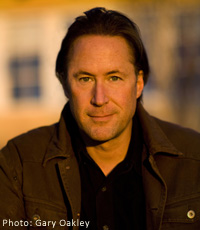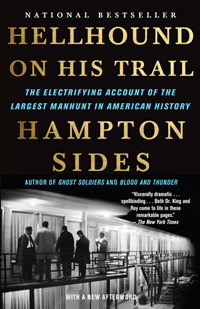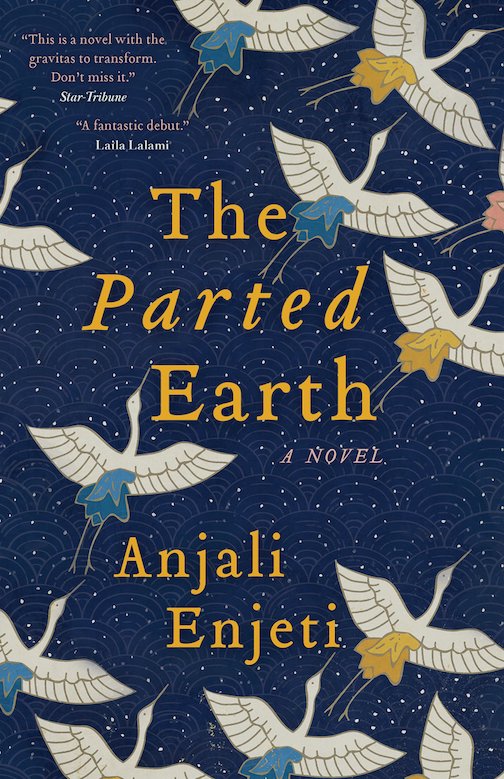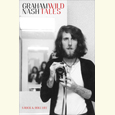Telling Stories
Hampton Sides talks about Memphis, civil rights, and why some people think he’s a CIA agent
Hampton Sides was just six years old when Martin Luther King Jr. was assassinated in Memphis. Sides went on to become a respected journalist and author of several bestsellers about everything from the Wild West to World War II, but he never stopped thinking about how King’s death continued to reverberate through his hometown—especially in the figure of King’s assassin, James Earl Ray. And so, several years ago, Sides went back to Memphis and began to reconstruct the events that brought Ray and King together—and that pulled the nation apart. The result was Hellhound on His Trail, a taut, finely wrought story that spent weeks on The New York Times bestseller list and is now being turned into a movie by Universal Studios.
Chapter 16: First, let’s talk about your choice of subjects. You’ve written about all sorts of subjects—from World War II to Kit Carson—and in a way this story, with its fascinating characters and fast-paced action, is of a kind with your previous work. But you’ve also got a personal attachment, as a Memphian, to the story of King’s death and the hunt for Ray. Can you talk a bit about that?
 Sides: It’s a time-honored literary instinct for a writer to want to return to the place where he was born. Not only did I want to go back to my hometown, I wanted to go back to the pivotal, benchmark moment in my hometown’s history and try to reconstruct it. Memphis is this amazing gothic place that I know well, and it is, in a sense, a major character in the story. The King assassination continues to send out shockwaves throughout the city. I wanted to test my memories of what happened—I was only six at the time—and I wanted to cross-examine the stories that were passed down in my family. Like nearly everyone else in Memphis, my connection to these events was immediate and personal. For example, my dad worked for the law firm that represented King and the garbage workers, and my grandfather owned a photographic studio on Beale that was looted and vandalized during the riots. In the end, I think my love and fascination for Memphis helped sustain me through the inevitable snags and left turns of this project.
Sides: It’s a time-honored literary instinct for a writer to want to return to the place where he was born. Not only did I want to go back to my hometown, I wanted to go back to the pivotal, benchmark moment in my hometown’s history and try to reconstruct it. Memphis is this amazing gothic place that I know well, and it is, in a sense, a major character in the story. The King assassination continues to send out shockwaves throughout the city. I wanted to test my memories of what happened—I was only six at the time—and I wanted to cross-examine the stories that were passed down in my family. Like nearly everyone else in Memphis, my connection to these events was immediate and personal. For example, my dad worked for the law firm that represented King and the garbage workers, and my grandfather owned a photographic studio on Beale that was looted and vandalized during the riots. In the end, I think my love and fascination for Memphis helped sustain me through the inevitable snags and left turns of this project.
Chapter 16: Second, as you talk about in the beginning of the book, you spent part of your childhood hanging out at Shelby Foote’s house, some of it (most of it? all?) while he was working on the Civil War trilogy. First of all, what was it like playing at the foot (no pun intended) of the master, and were you aware at the time of what he was doing? And, second, how did his work inform your own career, and in particular this book?
Sides: Shelby’s son Huger Foote (now a fine-art photographer) and I were in a rock band together. We’d be over at Shelby’s house, cranking up the Hendrix and Pink Floyd as loud as possible—doing everything we could to prevent Shelby from finishing his great Civil War trilogy. Shelby would rap on the door and, in a great cloud of pipe smoke, he’d shout, “Huggy, shut up with that racket, I’m workin’ on Appomattox!” And we’d be like, “Appomattox?”
I didn’t fully appreciate what Shelby was up to until many years later when I read the trilogy and did a series of lengthy magazine interviews with him. He was the first writer I ever met, and he was one of the master practitioners of narrative history. I’m sure it was no accident that when I became a writer, I gravitated toward narrative history myself. I had to find my own voice and style, of course—Shelby’s beard, pipe, and Delta eccentricities would have been pure affectation if I’d tried to adopt them myself—but something of his spark and zest for the genre surely sank in.
Chapter 16: You say Memphis still reverberates with the legacy of King’s assassination: in what ways? Put another way, while the city must have changed since then, how does the Memphis of 2011 compare with the one you grew up in, and how did King’s killing affect that course?
 Sides: I think the turmoil surrounding the assassination and the garbage strike set back the course of race relations many years in Memphis and accelerated the phenomenon of mass white flight to the suburbs. It also left a sense of stigma that’s hung over our city— not unlike the one that hung over Dallas after JFK. The irony is that through its music, Memphis had arguably done more to integrate the nation than a hundred pieces of legislation—the powerful music scene there has always been about racial cross-pollination. Yet suddenly, with the King assassination, Memphis became synonymous with backwards policies and racial martyrdom. Memphis is now a big, bustling international city, but in some ways, it still has a chip on its shoulder and an inferiority complex that dates back to April 4, 1968.
Sides: I think the turmoil surrounding the assassination and the garbage strike set back the course of race relations many years in Memphis and accelerated the phenomenon of mass white flight to the suburbs. It also left a sense of stigma that’s hung over our city— not unlike the one that hung over Dallas after JFK. The irony is that through its music, Memphis had arguably done more to integrate the nation than a hundred pieces of legislation—the powerful music scene there has always been about racial cross-pollination. Yet suddenly, with the King assassination, Memphis became synonymous with backwards policies and racial martyrdom. Memphis is now a big, bustling international city, but in some ways, it still has a chip on its shoulder and an inferiority complex that dates back to April 4, 1968.
Chapter 16: One of the striking things about the shooting is that, despite all the tension in the weeks before over the garbage workers’ strike, and despite the horrible violence that broke out in other cities, Memphis stayed relatively calm. Why do you think that is?
Sides: Two reasons. First, the National Guard was already there, and they clamped down on the city within minutes. Second, a number of brave, eloquent figures like the Rev. James Lawson got on the radio and implored the black community not to descend into violence. Lawson forcefully made the case that aggression and revenge would be the very last thing that King himself would have wanted. Lawson’s arguments held sway, and the city remained surprisingly quiet while the rest of the nation burned.
Chapter 16: Back to Foote and methods. On the one hand, you’ve thoroughly footnoted your work, unlike Foote in his Civil War trilogy. On the other hand, in your introduction you talk about how you borrowed his novelistic approach to history writing. Can you talk about that a bit, and why you settled on that for this book?
Sides: Traditional history, conventional history, has a very well-deserved reputation for being deadly dull. Somewhere along the way the academic discipline of history got hijacked by a bunch of tweed-coated druids who don’t speak, or write, in English, and who seem to have an outright hostility toward narrative. When Barbara Tuchman was asked what historians can do to make readers care about history again, she said, “Two words: Tell stories.” I try to work out of that tradition—which is really the same tradition that Foote, McCullough, Catton, and now so many contemporary writers work in. I spend an enormous amount of time thinking about characters, settings, arc, foreshadowing, tension, point-of-view, and a host of other story elements that I guess are more commonly associated with fiction. The only difference is—and it’s a crucial difference—you can’t make anything up! That’s why my notes and bibliography in Hellhound run to nearly sixty pages. I dug hard for every one of those “novelistic” details.
Chapter 16: James Earl Ray is, of course, a major figure in your book. You spend a lot of time developing his background and life story, yet in some ways—and this is to your credit—there remains something inscrutable, something paradoxical, about him at the end of the book. He’s a racist but more of a casual type than a firebreather, certainly not someone you’d expect to assassinate someone. And yet he did. All good dramatic characters are written with something unresolvable about them. Still, he was a real person, with real reasons for acting. What do you ultimately make of him as a historical figure? What do you think motivated him?
Sides: Ray is the kind of person who slips between the cracks. He’s crafty and cunning, but not exactly smart. He’s a racist, but not all-consumingly so. He’s absolutely nutty, and a sociopath, but not a deranged psychotic like some of our assassins. He’s certainly capable enough of bringing off a murder, but not the sort of guy you’d hire as a professional hitman if you were, say, the Mafia or some other criminal syndicate. Why did he do it? That’s still the hardest question to answer. And because he lied all the way to his grave, we may never know.
It’s hard sometimes to find a clean rational explanation for an insane act of violence. It probably made sense in his own disturbed mind. I’m convinced that killing King solved a lot of his problems. It gave him something to plan and plot and focus his energies on. It fit into his politics. He actually thought it would help Governor Wallace’s presidential bid. He also hoped it would make him money —Ray was well aware of the bounties out there on King’s head and hoped to connect with them. In the end, though, I think he did it for some kind of recognition. He spent his entire criminal career striving for anonymity, yet he wanted the world to know he existed. He wanted to do something big, bold, and lasting. And sadly, like so many before him, he found that gunning down a charismatic national figure was the best way to achieve this.
Chapter 16: In part because of Ray’s idiosyncrasies, there have been any number of conspiracy theories around the assassination in the decades since. You wisely choose to avoid these in the book, but I’m sure in some way, whether while researching or promoting it, you had to deal with them. What do you tell people when they bring up these theories?
Sides: I grossly underestimated the ferocity of the conspiracy camp. They are a small group of people, but they are disproportionately loud and vehement. I’m used to people either liking or not liking my books. With the conspiracy people, it was something else: my book was an affront to their entire worldview. These guys—and they’re almost always guys—have said that I’m a federal operative and that “Hampton Sides” is a pseudonym concocted by the CIA. Seriously.
In the new “Afterword” to the paperback, I deal with the conspiracy question in great detail. Let me be clear. Conspiracies and cover-ups have happened throughout our history. I have no emotional or patriotic investment in believing that my government is good. I have no opinion on JFK or RFK or any other case the conspiracists harp about. All I know is that after reviewing every shred of evidence I could dig up on the King assassination, I’m absolutely convinced that James Earl Ray was guilty. He may have been part of a small, crude plot that originated in the criminal underworld, but I simply found nothing credible to suggest that he was part of a massive, shadowy, government-led plot, or that he was a patsy. I realize this is hugely disappointing to the toupee-wearing insomniacs who populate the conspiracy world, but there it is.
Chapter 16: Finally, the inevitable closer—beyond the sales numbers, what’s been the reaction to the book? Anything surprising that might tell you something new about the way America is still grappling with King’s death and the 1960s?
Sides: Twain said that history doesn’t repeat itself, but sometimes it “rhymes.” I think there are a lot of echoes and similarities between the late-1960s and today. Here we are fighting an unpopular war against hard-to-find enemies on the other side of the planet, a war that seems both intractable and interminable and is draining our nation’s coffers. Here we are with a charismatic but controversial man in the White House who seems a curious amalgam of JFK, RFK, and MLK. Here we are with a grassroots political movement, the Tea Partiers, who, like the Wallace campaign before them, seem to be capturing and amplifying reactionary forces in our society. And as the recent Arizona shooting shows, we still have a penchant for hatching madmen who, for whatever sad reasons, try to take aim at history. I certainly think it’s true that we’re still grappling with the meaning of King’s life and the significance of his death. There are now four major King film projects under development—one of them based on my book. In today’s inflamed environment, King’s essential message of social change through non-violence is more vital than ever.
[This article appeared originally on March 29, 2011. It has been updated to reflect new event information.]

Nashville native Clay Risen is the author of A Nation on Fire: America in the Wake of the King Assassination and American Whiskey, Bourbon and Rye: A Guide to the Nation’s Favorite Spirit. His new book, The Bill of the Century: The Epic Battle for the Civil Rights Act, appeared in spring 2014. He lives in New York, where he is an editor at The New York Times.





